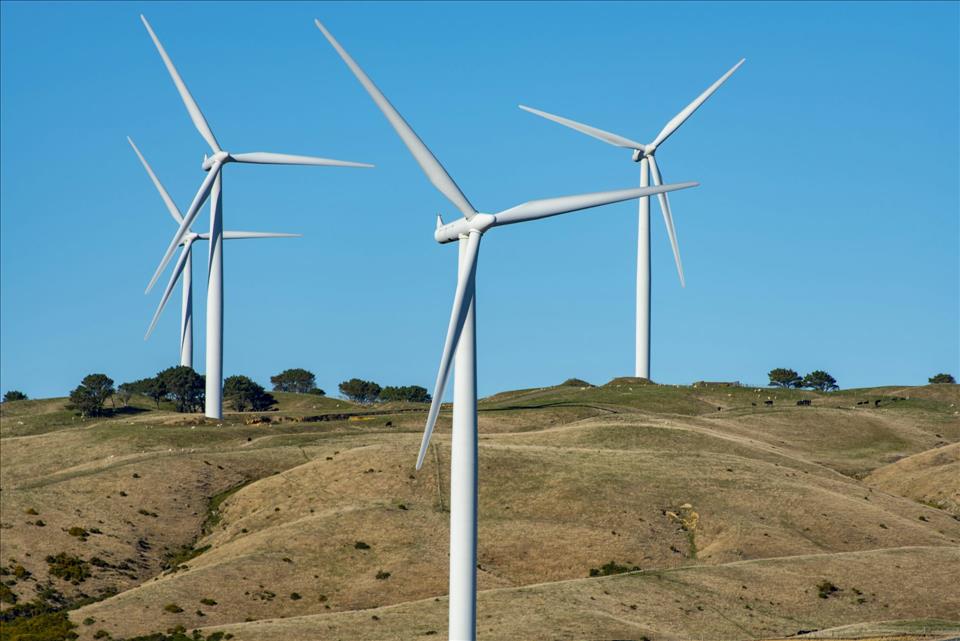
Why Does NZ's New Energy Plan Sideline Renewables And Ignore Progress Made Already?
The package was criticised for being unlikely to either bring down prices or increase construction for new generation. But it's just as important we see how much the plan assumes fossil fuels are the only answer, and how little it connects with important reforms already underway.
Last year, the government commissioned an analysis of the performance of electricity markets from international consultancy Frontier Economics. That report was delivered in May this year, but the government withheld it until it had decided what to do.
The report itself was awkward politically (it suggested privatising power companies and amalgamating local distributor companies), and the two peer reviews were very critical. But in the event, final policy choices were very different from Frontier's recommendations.
The government has signalled a procurement process to build an import facility for liquefied natural gas (LNG). And it has assured the three power companies in which it has a majority stake that it will provide capital for new generation projects.
Rightly, attention has focused on the risk to supply during dry years. Hydro produces about 60% of New Zealand's electricity , so in prolonged spells of low hydro inflows we use more coal and natural gas.
But the underlying assumption of both the Frontier study and the government's package is that only thermal generation will see us through a dry year – and by thermal they mean fossil fuels.
Indeed, the Frontier report downplays the role of renewables. It emphasises the unpredictability of wind and solar, and how overbuilt and prohibitively expensive the system would have to be to rely on them.
The government package argues that declining gas reserves and policy uncertainty have left the system exposed, with no reliable source of fuel. That is an exaggeration, but it goes from there to announcing LNG as the solution.
None of this is fair to renewables, or to the work already done on developing renewable solutions.
Renewables are not unreliableIt's true that wind and solar are intermittent. But they are not unreliable or unpredictable, and a lot of progress has been made on forecasting them accurately for the operation of the electricity system.
New Zealand's wind resources are very good by international standards , and offshore wind is even better. Wind and solar complement hydro well, and hydro is very reliable, predictable and flexible.
Above all, wind and solar are relatively cheap to build and operate, and they keep getting cheaper. It's not an accident that for years they have been the technologies of choice for power companies, along with geothermal.
Those companies don't really want to build expensive new coal or gas-fired plants And if we are serious about our zero carbon targets, nor should the government.
It's also doubtful LNG imports will be necessary. While natural gas reserves are declining , the inevitable higher prices will be a problem for large users (such as Methanex) that depend on low prices. So there is likely to be enough gas produced domestically for residential and commercial uses, and for electricity generation, for some time yet.
As a result, gas (and coal) can continue to be a proportion (albeit declining) of the electricity mix for“firming” supply and dry-year conditions while the rapid expansion of renewables continues.
Progress is already being madeThe other striking thing about the government's energy package is how little it refers to the large amount of policy and regulatory work already underway to reform the electricity system.
It's true the government and its main regulator, the Electricity Authority, have been slow to promote real change in the past. But that has all changed.
In 2024, the authority adopted a major collaborative initiative from its Market Development Advisory Group , which mapped out the changes that would lead to a reformed and renewables-dominated power system.
The government issued a government policy statement (the first in 18 years) making its expectations clear and endorsing the advisory group's report.
The Electricity Authority and the Commerce Commission set up an Energy Competition Task Force , which has pressed forward on a number of regulatory reforms. These are often technical but they are rapidly reshaping the sector.
Overall, this is improving competition, making it easier for wind and solar to enter the market, providing tools to manage intermittency and price spikes, and increasing consumer choice.
I argue this work will deliver better results than many items in the recent energy package. But it needs determined political support and regulation to change practices that have suited the incumbents but failed to deliver for consumers.
There are many other problems to face in energy policy, of course. But the proven merits of renewables and the work already underway to grow their contribution must be central to the continuing debate.

Legal Disclaimer:
MENAFN provides the
information “as is” without warranty of any kind. We do not accept
any responsibility or liability for the accuracy, content, images,
videos, licenses, completeness, legality, or reliability of the information
contained in this article. If you have any complaints or copyright
issues related to this article, kindly contact the provider above.


















Comments
No comment